April 2023 Plant Profile: Western Leatherwood
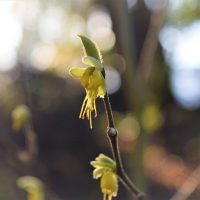
As Spring arrives, we here in the Pacific Northwest are gifted the opportunity to observe a wide variety of plant species we may not have noticed before. This month, we are focusing in on a beautiful, rare, San Francisco Bay-area endemic shrub. Dirca occidentalis can be found in the Washington Park Arboretum, but wait… what is it doing here?
Read morePartner Spotlight: Jesse Miller

Sometimes your professional career takes you in a straight line, other times it involves a few twists and turns. For Jesse Miller, it involves looping back around a couple times, at least geographically. His new position as the Botanist for the Washington Natural Heritage Program (WNHP) is the second time he has landed in Olympia – the first was as an undergraduate at Evergreen State College.
Read moreSpotlight on BES 491 undergraduate research student: Brandy Eckman
Champion Trees of Washington Park Arboretum
What is a Champion Tree?
A Champion Tree is the biggest tree of its species in either circumference, height, or spread (how far the branches spread out to either side). Their measurements are given a point valuation in American Forest Points and then sent to either the state, national, or international registry who all keep track of Champion Trees with the highest point values in each species.
Read moreAn Afternoon Walk at the Washington Park Arboretum
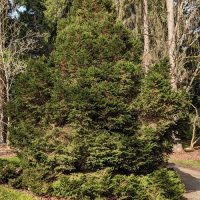
1) Picea abies Norway Spruce
This evergreen conifer displays a beautiful pyramidal shape that adorns the entrance of the Asian Maples when coming from the Graham Visitor Center.
In its native habitat, the mountains of northern and central Europe, this tree matures to 100 – 150 feet tall. However, naturalized trees planted in temperate regions of North America mature to 40 – 60 feet tall.
Evergreen Barberries at the Washington Park Arboretum
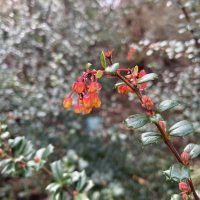
1) Berberis darwinii Michay, Darwin’s Barberry
This thicket-forming evergreen shrub is native to Chile and boasts small holly-like leaves, profuse orange blossoms, dark blue berries, and ample thorns.
Darwin is usually credited with “discovering” this species, however, it was known and used by Indigenous populations long before he collected it.
Michay is a serious environmental weed in New Zealand and is on the watch list in California.
Rare Plant Highlight: Pacific lanceleaved spring beauty
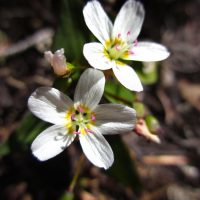
Claytonia multiscapa ssp. pacifica is located in the niche habitat of wet subalpine to alpine meadows. It is a treasure to the Olympic Mountains in Washington and the North Cascade Range in Vancouver B.C. Keep your eyes peeled for these delicate white flowers on the edge of melting snowfields in the late spring to mid-summer months.
Commonly known as the Pacific lanceleaved spring beauty, this flower is a hairless perennial with multiple stems from a roundish corm.
February 2023 Plant Profile: Baker Cypress
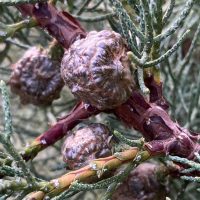
The Baker cypress, the most northern and hardiest cypress in North America is a tree with a challenging future ahead of it. Within its native range of southern Oregon and northern California there are several populations, many a long distance separate from others.
Read moreJanuary 2023 Plant Profile: Pitch Pine
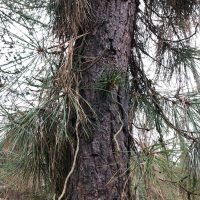
What better time than winter to highlight one of the Arboretum’s conifer specimens? January is also an excellent time to take a trip out to Foster Island to walk amongst some of the many birds that make the Arboretum home. Beside the path on Foster Island – just before you cross under the 520 bridge – you will find a pair of Pinus rigida. The species name rigida refers to its stiff and sharp cone scales and needles. The tree’s common name – pitch pine – derives from the high resin content in its wood.
Read moreNew Year Adornments at the Washington Park Arboretum
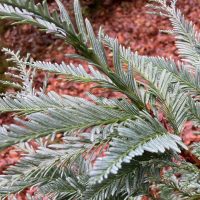
1) Sequoia sempervirens ‘Henderson Blue’ Coast Redwood
Coast Redwood typically has forest green needles, though cultivars range from frog-belly green to silver and powder blue.
This Winter Garden specimen is pruned regularly to keep it dense and short to best show off its beautiful foliage.
Sequoia sempervirens is native to the foggy northern California coast and is currently listed as endangered due to logging and habitat loss.
December Plant Profile: Bronze Loquat

We added an interesting specimen this year as a foundation tree in the newly renovated Soest Herbaceous Display Garden bed 3. Our Bronze Loquat was grown from seed that was wild collected by Dan Hinckley at higher elevation in the mountains of Taiwan. We received a sapling from Dan in 2014 and have grown it to larger size in our nursery before planting earlier this year.
Read more